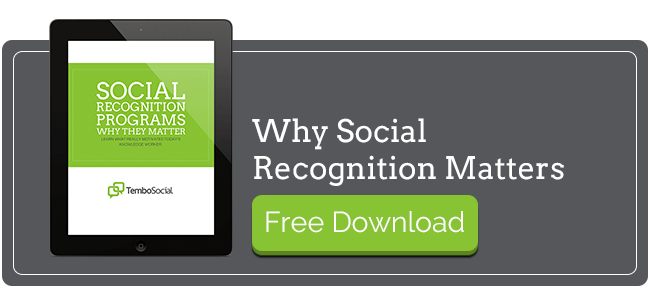 Employee morale, co-worker relations, worker retention - these qualities all have a remarkable impact on the productivity of your workforce and the success of your organization. Unfortunately, many companies struggle to foster the type of engagement that can fuel better performance. Managers, supervisors and other leaders need resources that will help them encourage greater employee participation without requiring a significant amount of their valuable time and corporate resources.
Employee morale, co-worker relations, worker retention - these qualities all have a remarkable impact on the productivity of your workforce and the success of your organization. Unfortunately, many companies struggle to foster the type of engagement that can fuel better performance. Managers, supervisors and other leaders need resources that will help them encourage greater employee participation without requiring a significant amount of their valuable time and corporate resources.
Case in point: Governmental groups suffer from disengagement
FedWeek recently reported that CHCOs and HR leaders found low levels of engagement and employee satisfaction were afflicting governmental agencies. In addition to some of the general factors described below, which apply to any type of organization, these groups were impacted by circumstantial conditions including furloughs and the government's partial shutdown.
While these particular factors weren't exactly avoidable by the agencies, the struggle to maintain a positive employee morale and satisfactory levels of engagement points to the importance of shaping the conditions they can control: By improving in these areas, organizations may be better positioned to weather the storm of economic downturns or other situational challenges.
Four factors that stifle motivation
The CHCO and HR report pointed to a number of conditions that detracted from employee engagement at federal agencies. These four issues can impact workforce performance in any organization:
- Uneven workloads
- Lack of involvement among lower-level managers and supervisors, including communication with employees
- Failure to appropriately address poor work performance
- Low levels of incentives and recognition to reward excellence
To mitigate these problems, the report emphasized the importance of furnishing managers with metrics and data so they can take more responsibility for employee morale and engagement. In particular, innovative approaches to recognition and motivation with non-monetary rewards could help to improve activity even when budgets are limited. The source also noted the importance of analyzing employee survey data and responding to performance with strong, "multisource" feedback.
Taking a proactive approach
Even if your organization isn't already suffering from poor employee performance, it's critical to establish a strong foundation of positive morale and loyalty. To reduce the impact of the factors mentioned above and to create a company culture that supports achievement, managers can implement social recognition software.
Not only do these resources give leaders the metrics and data they need to offer more constructive feedback, observe issues before they become detrimental problems and communicate better with workers, they also foster positive relationships among team members. With peer-to-peer recognition made simple, natural and highly accessible, your enterprise can:
- Inspire and energize employees by expressing appreciation.
- Retain talent and increase productivity because employees know their contributions matter.
- Identify strengths, including managerial skills.
- Streamline processes to facilitate smoother, more timely recognition.
With these aspects in place, companies can ease some of the burdens of shifting workloads while also keeping better track of performance and which conditions best set their teams up for success.
Simply feeling valued has a surprisingly substantial influence on productivity and effort. To learn more about how peer and managerial employee recognition makes a difference in the workplace, check out the "Why Social Recognition Programs Matter" infographic.



